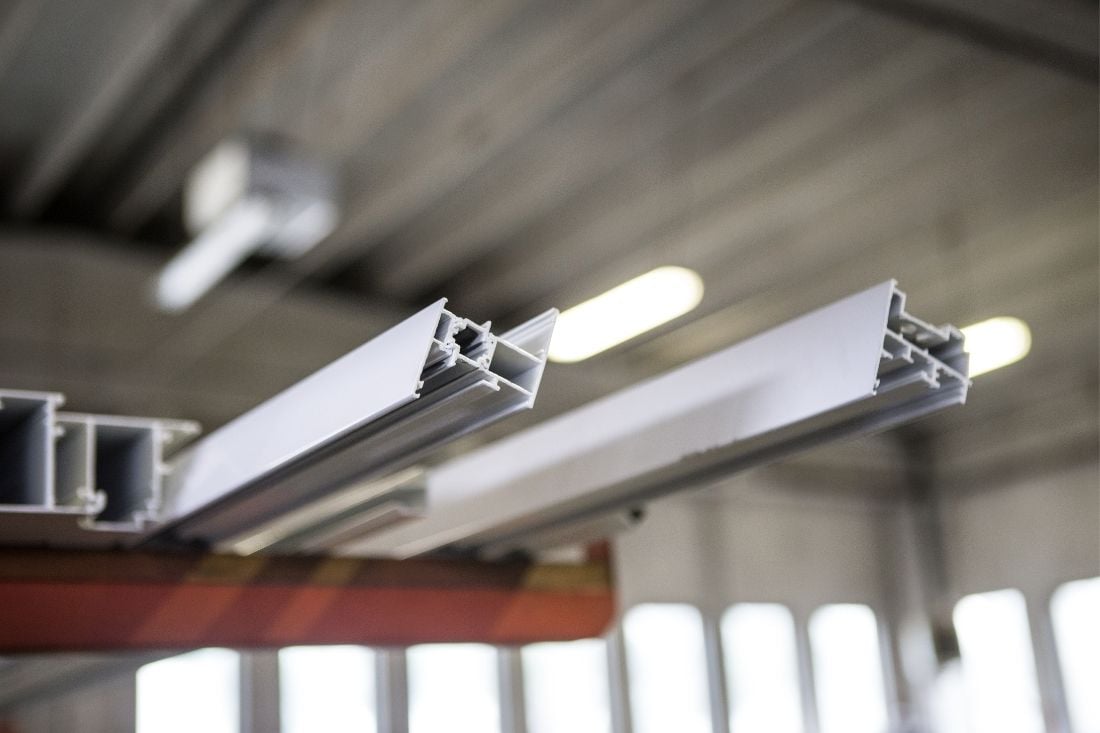Aluminum Sigma Profiles and Features
Aluminum sigma profiles are special shaped metal components, widely used in modern engineering and manufacturing of aluminum air conditioning products.

Aluminum sigma profiles are special shaped metal components, widely used in modern engineering and manufacturing of aluminum air conditioning products.
In industrial design and engineering, material selection plays a critical role in the success of projects. In this context, aluminum sigma profiles have become an important material, especially for structural applications.
What is Aluminum Sigma Profile?
Aluminum sigma profiles are metal profiles made of aluminum alloys with a special cross-section similar to the letter 'Σ' (Sigma). These profiles are known for their light weight, high strength and superior resistance to corrosion and are mostly used in structural support and framing works.
Aluminum sigma profiles, which are frequently preferred in the building industry and carrier systems, combine the strength and lightness properties of aluminum and serve as an excellent carrying and balancing element. They are ideal for various industrial applications such as chassis, cabinets, tables and conveyors. These profiles can be produced in different sizes and thicknesses for use as part of load-bearing systems. Thanks to the unique properties of aluminum, these profiles have high corrosion resistance and offer a long service life.
With their durability and adaptability, aluminum sigma profiles play a key role in modern engineering and design projects. The benefits of these profiles have made them a popular choice not only for industrial applications, but also for architectural and decorative applications.
Characteristics of Aluminum Sigma Profiles
Aluminum sigma profiles are characterized by aluminum's light weight, high corrosion resistance and excellent machinability. Thanks to their special geometric structure, these profiles provide high strength and stability, making them ideal for a variety of industrial applications.
- Light weight: Since aluminum is lighter than steel, sigma profiles reduce structural weight.
- Corrosion Resistance: Aluminum is resistant to corrosion by a protective layer formed as a result of oxidation.
- High Strength: They are resistant to high tensile and compressive forces.
- Flexibility and Formability: They can be produced in various shapes and sizes.
- Heat and Electrical Conductivity: They are good conductors of heat and electricity.
Intended Use and Advantages
Thanks to their excellent properties, aluminum sigma profiles have a wide range of applications, from structural support to architectural design. Widely used in industries as diverse as automotive, aerospace, construction and machinery manufacturing, these profiles offer both cost-effectiveness and high performance advantages.
Areas of Use:
- Structural Support: Used in load-bearing structural elements such as buildings, bridges, industrial structures and stadiums. These profiles increase the safety and longevity of structures with their durability and lightness.
- Machine Frames: It is preferred for framing precision machinery, robotic systems and automation equipment. The robust structure provided by Sigma profiles protects sensitive equipment and provides a stable working platform.
- Automotive and Transportation: Used in chassis and body structures of vehicles. Its light weight increases the fuel efficiency of vehicles, while its strength offers more safety during collisions.
- Aviation Industry: Used in the body structure of airplanes and spacecraft. The light weight of Sigma profiles provides fuel savings and high performance in the aviation industry.
- Architectural Design: Used in aesthetic and functional structures, especially in modern and minimalist designs. With their durable and lightweight construction, aluminum sigma profiles are ideal for supporting large spans and creating visually appealing designs.
Advantages:
- High Strength and Light Weight: Aluminum sigma profiles maximize structural efficiency with high strength and low weight properties.
- Corrosion Resistance: The natural oxide layer of aluminum protects the profiles against environmental influences, thus providing longer-lasting and maintenance-free structures.
- Thermal and Electrical Conductivity: These profiles effectively conduct heat and electricity, making them suitable for use in specialized applications.
- Environmentally Friendly and Recyclable: The recyclability of aluminum makes it an important sustainable building material.
- Flexible Production and Design Freedom: Aluminum sigma profiles can be produced in a variety of sizes and shapes, giving designers and engineers a wide range of options for developing unique projects.
Production Processes
The production of aluminum sigma profiles involves a complex and detailed series of processes. These processes are carefully designed to ensure the desired mechanical and aesthetic properties of the profile. Here is a more detailed description of these processes:
- Alloy Preparation:
Material Selection: Initially, the aluminum alloy required for specific properties and applications is selected. These alloys are usually a mixture of pure aluminum and copper, magnesium, silicon and other elements.
Alloy Mixing: The selected elements are mixed in specific proportions to create an alloy with the desired mechanical properties. This process determines the properties of the profiles, such as strength, flexibility and corrosion resistance.
- Extrusion
Mold Preparation: A mold suitable for the sigma profile cross-section is designed and prepared.
Heating and Pressure Application: The aluminum alloy is heated and passed through the die under high pressure. During this process, the aluminum takes the shape of the mold and forms long sigma profile strips.
Cooling and Cutting: After extrusion, the profiles are cooled and cut to the desired dimensions.
- Heat Treatment:
Dissolution and Aging: Solution treatment (heat treatment) is applied to increase the strength of the profile. This process ensures homogeneous distribution of the elements in the alloy and then the material is hardened by the aging process.
Cooling: After the process is completed, the profiles are cooled slowly or rapidly, which affects the microstructure of the material and therefore its mechanical properties.
- Surface Treatments:
Anodization: Anodization is done to make the profile more resistant to corrosion. This process creates a protective and decorative oxide layer on the surface of the aluminum.
Paint and Coating: For aesthetic purposes or additional protection, profiles can be painted or coated with special coatings.
Surface Grinding and Polishing: Surface grinding and polishing processes can be performed to improve surface quality and achieve a desired finish.
Aluminum sigma profiles are excellent materials for modern industrial applications. They have a wide range of applications due to their light weight, high strength, corrosion resistance and flexible production possibilities. Production processes can be customized according to the properties of the alloy and the intended use, making them ideal for a variety of industrial applications.

